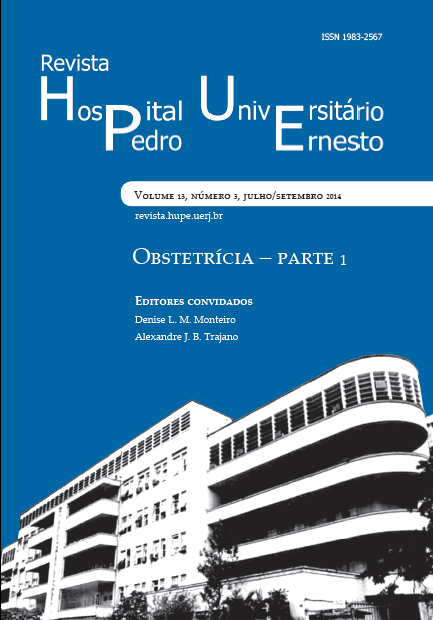Fetal Growth Retardation
DOI:
https://doi.org/10.12957/rhupe.2014.12135Abstract
Are called ferns small for gestational age (SGA) those who have the estimated weight percentile below 10. Intrauterine growth restriction (IUGR) is the leading cause of SGA fetuses and is associated with high rate of fetal and neonatal morbidity and mortality. Proper diagnosis and monitoring has an impact as a marker of assistance for the mother and the fetus. This review aims to assist the management of this serious condition, trying to assist in reducing the deleterious effects on the fetus and the neonate. Currently, in addition to the investment in neonatal treatment, has sought to invest in the early recognition of patients with higher risk of having fetuses with IUGR and in therapeutic ways to increase its prevention, thus decreasing its incidence and severity. The main causes of IUGR are: genetic changes, infections and placental insufficiency. Recognize these causes help in the decision of the appropriate time of childbirth. Of all, the placental insufficiency is the most common and which presents the greatest challenges because it is paradoxically the least lethal potential and at the same time the most kills in our midst. The appropriate management of pregnancies with IUGR caused by placental insufficiency imposes the necessity of the full knowledge of the sequence of the hemodynamic changes fetus-placental Doppler to, for the decision about the necessity and the appropriate time, depending on the gestational age (GA), to anticipate the birth with a view to damaging action that prematurity can sum these ferns, with unfavourable repercussions that may go beyond the perinatal period.Downloads
Published
2014-07-29
Issue
Section
Artigos


